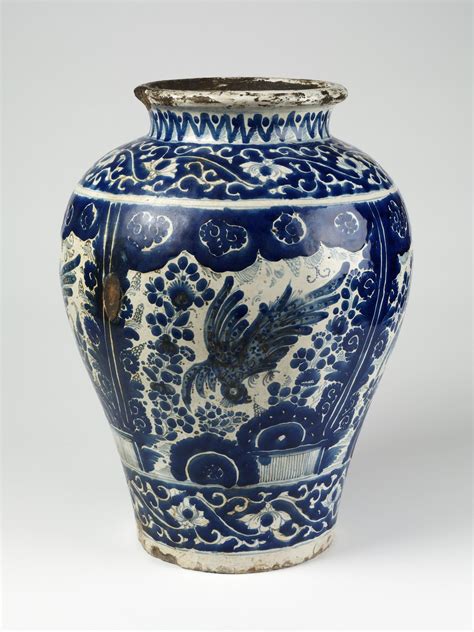chinese ceramics excavated mexico This chapter deals with the distribution of Chinese porcelains recovered in . Trevon Diggs is having coverage problems both on and off the field. Diggs had been dating New York rapper/model, Chinese Kitty. Kitty recently took to Instagram to reveal .
0 · chinese porcelain in mexico
1 · chinese porcelain archaeology
Six bulldozers battle on the streets of Hebei. Incredible stuff! Context: http://bit.ly/1WAm6XPEDIT: Yes yes, front loaders! The customer is always right. Fo.
Chinese Ceramics in Colonial Mexico (Lacm) George Kuwayama, Los Angeles . Map with the distribution of Chinese porcelain found in Mexico Wucai style lids, .
This chapter deals with the distribution of Chinese porcelains recovered in .
The existing Chinese ceramics in museums and venerable private collections in . Chinese Ceramics in Colonial Mexico (Lacm) George Kuwayama, Los Angeles County Museum of Art. University of Hawaii Press, Jan 1, 1997 - Art - 87 pages. This book explores the. Map with the distribution of Chinese porcelain found in Mexico Wucai style lids, Wanli period, from the San Jerónimo Convent in Mexico City. Photo Patricia Fournier
This chapter deals with the distribution of Chinese porcelains recovered in archaeological excavations and surveys in several Mexican sites, attesting the wide distribution of porcelain objects. Most Chinese porcelain vessels, ornaments, and sculptures have been found in Mexico City and Acapulco.
The existing Chinese ceramics in museums and venerable private collections in Mexico and Peru testify to this exchange. In addition, systematic archaeological excavations around the zocalo area in Mexico City, in Lima, and in other sites in the Spanish New World as well as from sunken Manila galleons have produced further evidence of this trade.
Ceramic specimens from archaeological excavations in Mexico, Peru, Santa Fe, New Mexico, Guatemala and Panama will be utilized to support their antiquity and substantiate their arrival aboard the Manila galleons. chinese porcelains, japanese porcelain, INAA, statistical analysis Abstract. This study analyzes porcelain fragments unearthed at multiple archaeological sites in Mexico City, formerly known as New Spain.
It is commonly excavated in many parts of Asia and other countries and was produced in large quantities. It can be dated to the second half of the 17th century and lasts until the 18th century .This is an archaeological and historical study of Mexico City and Xaltocan, focusing on the early years after the Spanish conquest of the Aztec empire in 1521. The study of households excavated in . An archaeological inspection of the Port of San Blas carried out in August 2016 and 2017 by SAS-INAH, yielded a collection of Chinese porcelain shards related to the transpacific commerce.Fig. 1.4 Porcelain in guan form with underglaze blue, Jingdezhen, before 1600. Height with cover: 43.5 cm. Photo Frank Goddio. Excavated from the San Diego shipwreck (1600) off the coast of the Philippines. The surface design has been divided into four lobed panels each showing a seated sage as well as decorative top and bottom scroll bands 13
chinese porcelain in mexico
Chinese Ceramics in Colonial Mexico (Lacm) George Kuwayama, Los Angeles County Museum of Art. University of Hawaii Press, Jan 1, 1997 - Art - 87 pages. This book explores the.
chinese porcelain archaeology
Map with the distribution of Chinese porcelain found in Mexico Wucai style lids, Wanli period, from the San Jerónimo Convent in Mexico City. Photo Patricia Fournier This chapter deals with the distribution of Chinese porcelains recovered in archaeological excavations and surveys in several Mexican sites, attesting the wide distribution of porcelain objects. Most Chinese porcelain vessels, ornaments, and sculptures have been found in Mexico City and Acapulco. The existing Chinese ceramics in museums and venerable private collections in Mexico and Peru testify to this exchange. In addition, systematic archaeological excavations around the zocalo area in Mexico City, in Lima, and in other sites in the Spanish New World as well as from sunken Manila galleons have produced further evidence of this trade.Ceramic specimens from archaeological excavations in Mexico, Peru, Santa Fe, New Mexico, Guatemala and Panama will be utilized to support their antiquity and substantiate their arrival aboard the Manila galleons.
chinese porcelains, japanese porcelain, INAA, statistical analysis Abstract. This study analyzes porcelain fragments unearthed at multiple archaeological sites in Mexico City, formerly known as New Spain.
It is commonly excavated in many parts of Asia and other countries and was produced in large quantities. It can be dated to the second half of the 17th century and lasts until the 18th century .This is an archaeological and historical study of Mexico City and Xaltocan, focusing on the early years after the Spanish conquest of the Aztec empire in 1521. The study of households excavated in .
An archaeological inspection of the Port of San Blas carried out in August 2016 and 2017 by SAS-INAH, yielded a collection of Chinese porcelain shards related to the transpacific commerce.
john deere 240 skid steer seat switch

john deere 260 skid steer drive motor site www.loaderpartssource.com
Browse a wide selection of new and used MINI excavators from local dealers and private sellers. Compare prices, models, trims, options and specifications between different excavators on Equipment Trader.
chinese ceramics excavated mexico|chinese porcelain in mexico